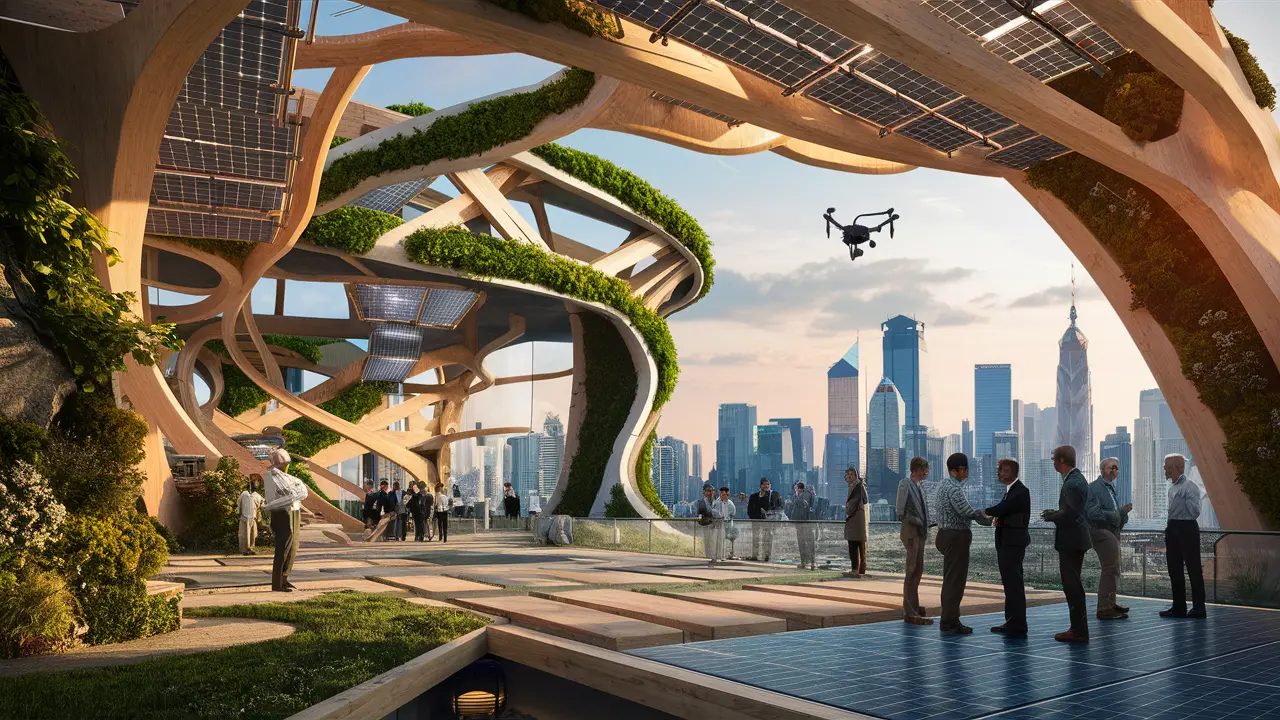Innovative sustainable materials are revolutionizing modern construction, offering eco-friendly alternatives to traditional building materials that reduce environmental impact and promote sustainability. Here are some examples of these materials:
- Cross-Laminated Timber (CLT):
- Description: Engineered wood panels made by gluing and stacking layers of wood at right angles.
- Benefits: Lightweight, strong, and fire-resistant; reduces carbon footprint compared to concrete and steel; promotes sustainable forestry practices.
- Bamboo:
- Description: Fast-growing grass with high strength-to-weight ratio and versatility in construction.
- Benefits: Renewable and biodegradable; absorbs carbon dioxide and releases oxygen; suitable for structural elements, flooring, and finishes.
- Recycled Materials:
- Examples: Recycled concrete aggregates, reclaimed wood, recycled plastic composites.
- Benefits: Reduces landfill waste; conserves natural resources; lower energy consumption during production compared to virgin materials.
- Rammed Earth:
- Description: Technique of compacting layers of earth within a formwork to create solid walls.
- Benefits: Excellent thermal mass properties; locally-sourced materials; low embodied energy; naturally insulating and durable.
- Hempcrete:
- Description: Composite material made from hemp hurds (woody core) mixed with lime binder.
- Benefits: Lightweight and breathable; regulates humidity and temperature; carbon-negative material (absorbs CO2 during growth); non-toxic and mold-resistant.
- Cork:
- Description: Bark from cork oak trees; used in flooring, wall insulation, and roofing.
- Benefits: Renewable and recyclable; biodegradable; naturally insulating and acoustic absorbent; supports sustainable forestry practices.
- Straw Bale Construction:
- Description: Building walls using bales of straw covered with plaster or clay.
- Benefits: Excellent insulation; renewable and locally available; low embodied energy; fire-resistant when properly treated.
- Green Roofs:
- Description: Roof systems covered with vegetation and growing medium over a waterproofing membrane.
- Benefits: Improves thermal insulation; reduces urban heat island effect; absorbs rainwater runoff; extends roof lifespan; provides habitat for wildlife.
- 3D-Printed Materials:
- Description: Using 3D printing technology with sustainable materials like clay, recycled plastics, or biopolymers.
- Benefits: Allows for complex geometries; reduces material waste; lower construction time and labor costs; customizable and adaptable designs.
- Photovoltaic (PV) Glass:
- Description: Glass panels integrated with solar cells to generate electricity.
- Benefits: Combines building envelope functions with renewable energy generation; reduces reliance on grid power; aesthetically pleasing.
These innovative sustainable materials not only offer environmental benefits but also contribute to healthier indoor environments and promote a more resilient built environment. Integrating these materials into construction practices can help achieve sustainable building certifications and standards, such as LEED (Leadership in Energy and Environmental Design) and BREEAM (Building Research Establishment Environmental Assessment Method).

